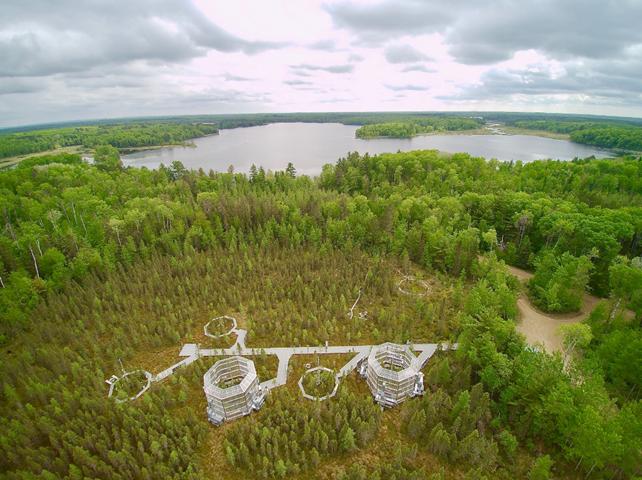
Credit: ORNL, U.S. Dept. of Energy
Transportation – Gauging pandemic impact
Oak Ridge National Laboratory researchers have developed a machine learning model that could help predict the impact pandemics such as COVID-19 have on fuel demand in the United States.
Called the Pandemic Oil Demand Analysis, or PODA, this model compared mobility patterns before and during the COVID-19 pandemic, analyzing historical weekly motor travel trends and projecting future usage.
“We developed this machine learning-based model by studying trip activities and corresponding fuel usage,” ORNL’s Shiqi (Shawn) Ou said. “The PODA analysis can serve as a useful tool to understand the impact of travel quarantine on fuel demand.”
In a Nature Energy study sponsored by Aramco Research Center, researchers focusing on mid-May until August determined that average fuel demand is not likely to reach pre-pandemic levels before October 2020. However, while a continued quarantine would have a negative impact on fuel demand temporarily, demand would likely recover to normal levels quicker.
PODA data could help inform economic and energy planning.
Media contact: Jennifer Burke, 865.414.6835, [email protected]
Image: https:/
Caption: ORNL researchers developed a machine learning model to know the impact a pandemic can have on U.S. fuel demand prior to a travel quarantine. Credit: Andy Sproles/ORNL, U.S. Dept. of Energy
Ecosystem – At the root
Oak Ridge National Laboratory scientists evaluating northern peatland responses to environmental change recorded extraordinary fine-root growth with increasing temperatures, indicating that this previously hidden belowground mechanism may play an important role in how carbon-rich peatlands respond to warming.
The team working at DOE’s whole-ecosystem warming experiment in northern Minnesota found that shrub fine-root growth increased linearly by 130% for every degree increase in soil temperature – a response 20 times greater than other ecosystems. This was driven by soil drying in the usually sodden peatlands, which store one-third of the world’s soil carbon.
According to published results, this response could explain why shrub coverage is increasing in these landscapes, which could shade out Sphagnum moss – a key species for carbon fixation in peatlands – and have downstream effects on peatland carbon storage.
“This work helps us understand a previously unknown aspect of these ecosystems, the world belowground,” said Avni Malhotra of Stanford University, formerly of ORNL.
Media contact: Stephanie Seay, 865.604.3384, [email protected]
Link: https:/
Caption: A belowground snapshot reveals the complex maze of tree and shrub roots and their fungal partners in carbon-rich peatland soils. Credit: Colleen Iversen/ORNL, U.S. Dept. of Energy
Link: https:/
Caption: Scientists use the Spruce and Peatland Responses Under Changing Environments experiment in Minnesota to assess the response of northern peatlands to increases in temperature and atmospheric carbon dioxide. Credit: ORNL, U.S. Dept. of Energy
Neutrons – Ferromagnetic topological material
A UCLA-led team that discovered the first intrinsic ferromagnetic topological insulator – a quantum material that could revolutionize next-generation electronics – used neutrons at Oak Ridge National Laboratory to help verify their finding.
Topological insulators act as insulators on the inside while allowing electrons to flow across their surfaces. Their less-studied ferromagnetic counterparts are thought to hold useful properties for quantum technology. The researchers discovered the first intrinsic ferromagnetic topological insulator – consisting of manganese, bismuth and tellurium atoms – by stacking ferromagnetic molecular layers.
To confirm the material’s intrinsic nature, the team used the High Flux Isotope Reactor at ORNL.
“Neutron diffraction’s high contrast can distinguish magnetic manganese atoms from others,” said ORNL’s Huibo Cao, co-author on the study published in Science Advances. “It is well-suited for the new two-dimensional material and its magnetism.”
“Using neutron diffraction, we concluded the atomic arrangement in each layer and confirmed the ferromagnetic order to support this discovery,” added ORNL co-author Lei Ding.
Media contact: Abby Bower, 865.323.9943, [email protected]
Image: https:/
Caption: Researchers performed single-crystal neutron diffraction using the HB-3A four circle diffractometer to confirm the first intrinsic ferromagnetic topological insulator. Credit: Genevieve Martin/ORNL, U.S. Dept. of Energy
Technology – Lab on a crystal
An all-in-one experimental platform developed at Oak Ridge National Laboratory’s Center for Nanophase Materials Sciences accelerates research on promising materials for future technologies.
The “Lab-on-a-crystal,” designed on a commercially available quartz crystal microbalance, or QCM, measures materials’ interrelated responses to the environment in real time – something that traditionally required different specialized instruments, multiple experiments and a lot of time.
Modified QCM hardware has been incorporated into a machine learning platform that optimizes data collection and identifies correlations among several simultaneous measurements, including mechanical, electrical and optical.
“Being able to characterize multiple functionalities simultaneously at macro-, micro- and nanoscales on the same sample is a breakthrough for materials sciences. In a day, we can accomplish a month’s worth of experiments,” said ORNL’s Ilia Ivanov.
A collaboration with researchers from the European Union on advancing rapid-detection methods for enzymes that degrade milk quality highlights the platform’s broad applications to CNMS users. — Ashley Huff
Media contact: Sara Shoemaker, 865.576.9219, [email protected]
Image: https:/
Caption: ORNL’s Lab-on-a-crystal uses machine learning to correlate materials’ mechanical, optical and electrical responses to dynamic environments. Credit: Ilia Ivanov/ORNL, U.S. Dept. of Energy
Computing – Enhancing fusion models
Combining expertise in physics, applied math and computing, Oak Ridge National Laboratory scientists are expanding the possibilities for simulating electromagnetic fields that underpin phenomena in materials design and telecommunications.
An initial application for the work is in fusion energy, for which modeling small-scale, energetic particle movements in fusion plasmas requires complex numerical simulations, particularly at plasma boundaries where electromagnetic fluctuations can result in energy loss or damage to the fusion reactor.
To overcome computational limitations and advance models of whole fusion reactors, the ORNL team developed the Adaptive Sparse Grid Discretization, or ASGarD, mathematical framework for solving complex equations.
As reported in a recent Computer Physics Communications paper, the team applied its framework to the foundational equations of electromagnetism, known as Maxwell’s equations, and demonstrated a 100-times reduction in the computational resources required for solving the equations compared to traditional methods. — Katie Jones
Media contacts: Jason Ellis, 865.241.5819, [email protected]; or Scott Jones, 865.241.6491 [email protected]
Image: https:/
Caption: Using the ASGarD mathematical framework, scientists can model and visualize the electric fields, shown as arrows, circling around magnetic fields that are colorized to represent field magnitude of a fusion plasma. Credit: David Green/ORNL, U.S. Dept. of Energy
###
Media Contact
Sara Shoemaker
[email protected]
Original Source
https:/
Related Journal Article
http://dx.




